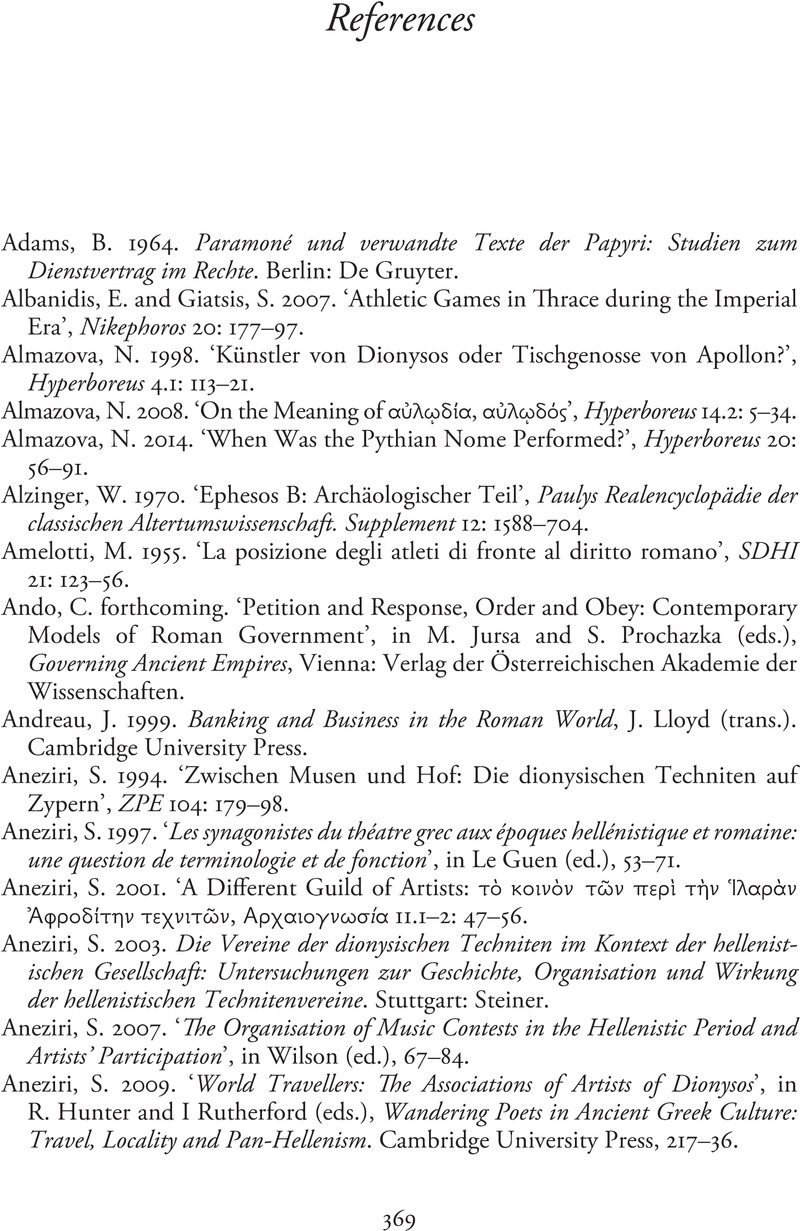References
Published online by Cambridge University Press: 02 February 2023
Summary

- Type
- Chapter
- Information
- Athletes and Artists in the Roman EmpireThe History and Organisation of the Ecumenical Synods, pp. 369 - 393Publisher: Cambridge University PressPrint publication year: 2023

